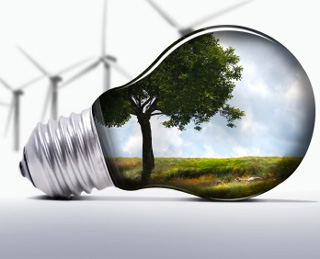 We often hear that the reason the so-called clean technology revolution has so far only amounted to a genteel protest is because new clean technologies are simply too expensive.
We often hear that the reason the so-called clean technology revolution has so far only amounted to a genteel protest is because new clean technologies are simply too expensive. Only rich Germans and Californians can afford such luxuries.
We must wait, so the story goes, for major "breakthroughs" to occur in renewable energy, biofuels, biomaterials, potable water, etc., before they can be cost competitive with conventional technologies and infrastructures. To convince us of this point, we are given graphs showing costs declining and volumes increasing for these emerging clean technologies, but the take-off point is always about a decade away.
Unfortunately, I can still remember seeing such graphs back in the late 1970s!
Well, I'm here to tell you that this story is really a fantasy. It provides a convenient excuse for not moving more aggressively on the clean technology front. The truth is that we are drowning in perfectly good clean technologies. What is lacking is not breakthrough technology but rather breakthroughs in how we bring these technologies to market.
Many corporations and universities today possess substantial stocks of unused (or at least uncommercialized) green technology literally "sitting on the shelf." Frequently, these technologies are disruptive to current core businesses or at least do not fit easily into existing business models.
GE, for example, has dozens of small, distributed solar and water technologies on the shelf, in part because the company's core business for the last half-century has been focused on large-scale infrastructural technologies (such as power plants) sold to governments or other large players. Even today, the company's "Ecomagination" initiative focuses on large-scale applications like Big Wind rather than small, distributed, point-of-use technologies which are outside of their commercial comfort zone.
My own institution, Cornell University, provides another vivid example. A few years back, my colleague Mark Milstein and I ran a little experiment. We wondered if some of the literally hundreds of technologies and intellectual properties just sitting on the shelf at the University might be commercially viable if viewed through a different lens.
Most Universities seek primarily to license the intellectual property produced by their faculty to existing corporations. A few try to encourage faculty to participate in the formation of new ventures, but most of these focus on the existing, served market in the developed world. My colleague Mark and I wondered, "what if we looked at some of these technologies through the lens of new enterprise creation focused on the vast underserved space at the base of the income pyramid?"
We structured a course around this question and selected a sample of shelf technologies that seemed to have the characteristics we were interested in (i.e. renewable, bio-based, small-scale, distributed applications). We assigned student teams to look at these technologies from this perspective. Sure enough, when viewed through the emerging lens of "disruptive" or "reverse" innovation, the majority of these technologies appeared to have real commercial potential. To be appropriate, however, these green technologies need to be optimized in new and unexpected ways, based on experience on the ground in actual underserved communities. The technology and the business model must co-evolve as the process of commercialization unfolds. This requires a new capability in business co-creation, which I have discussed elsewhere (see my blog on "Writing the Unfinished Symphony").
For aspiring Clean Tech entrepreneurs, therefore, expensive R&D and new invention are probably unnecessary; instead, the first step is to take a careful stock of what relevant clean technologies already exist on the shelf--either in existing large corporations, or at Universities. Many large corporations are "donating" these patents to Universities because they do not know what to do with them. So many perfectly good new clean technologies are available for a "song."
By gaining low-cost access to these technologies, it may be possible to engage in a form of modern-day green "alchemy." Indeed, there is a rare opportunity here to turn "lead" into "gold" by repurposing the thousands of clean "shelf" technologies extant in the World to first serve the needs of the underserved at the base of the pyramid. This unexploited opportunity will not last forever, however, since nature abhors a vacuum! It is clearly time to take the "Green Leap" to the base of the pyramid. For it is there that the Clean Tech Revolution will begin.
